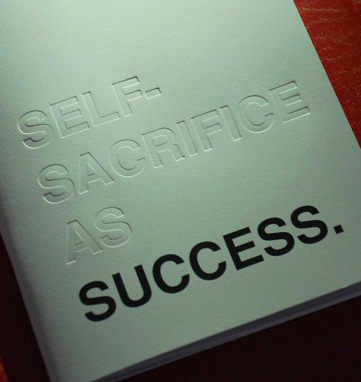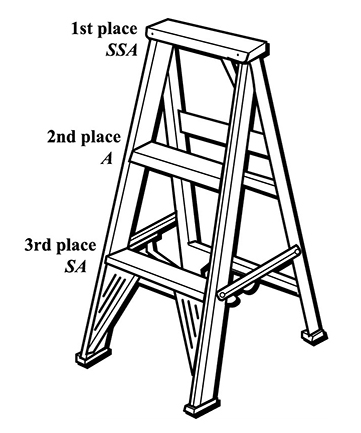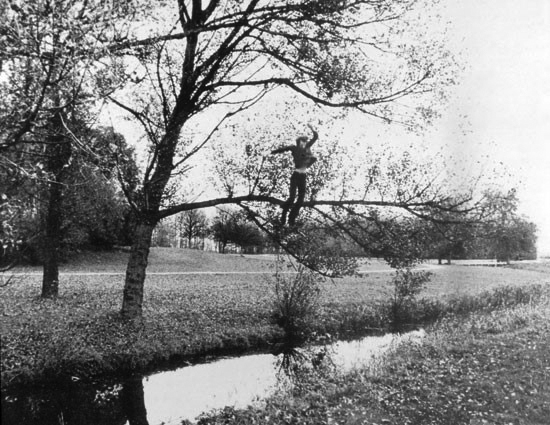Home // January.15.2018 // Paul Rowe
Power in Obscurity
What defines artistic success—fame, power, or wealth? The comfort of bringing your vision to life? In the manifesto Self-Sacrifice as Success, artist Léann Herlihy explores whether or not the contemporary artist can achieve success without sacrifice. A rich amalgam of criticism, drama, and alchemical metaphor, this work throbs with both insight and paranoia, insecurity of and acceptance of the artist's role in a world in which the value of art is stretched further and further into uncertain post-mortal realms.
Broken up into three main parts and in part influenced by the Polish writer Witold Gombrowicz, Self-Sacrifice as Success is composed of metaphors, applying mythical flair to theory in order to bring transparency to the processes of both artistic and critical composition. In the first section of the work, Herlihy outlines three archetypes for artists—artists who are known to be living, artists who are thought to be dead, and artists who have committed suicide—all the while suggesting the dangers of embracing or promoting such categories. Pointing to both familiar and idiosyncratic symbolic processes that emblematize the concept of artistic success, Herlihy hints that as scholars sacrifice their accepted critical truths, and as artists let the commonalities of author, history, literature, character, the avant-garde, and modernism die away, as noted by Mircea Eliade, “every vocation implies the supreme sacrifice of the self.” This implies that as our critical notions die out, the transience of performance takes precedence in the 21st century, an idea made lucid by the following introductory note to Herlihy's book:
The ink printed in this book has not been finished with a sealant. Each time the book is read, the ink degenerates. Like the human reading it, this book also lacks immortality.
With a heightened awareness of mortality and the transience of all existence for that matter, even the products of art, comes the dire need for a fresh transparency between art and criticism, the need for metaphor to bridge the realms of criticism and art while at the same time, quite paradoxically, an urgent need for metaphor to create the “clear distinction between reality and expectations.” Herlihy, then, seeks to set a “transparent (yet, hard and firm) pane of glass between the artists and the critics, to which the latter people watch on, as the former fight for fame.”
Yet if one surveys the current literary landscapes of Europe and the United States alike, it becomes clear that without a desire for success, there remains a daring, at times near-suicidal urge to create compositions that will strike a chord with critics. The idea of “success” alone has changed, but how, and in what ways? In what ways might the art of criticism remain an art in itself, dancing along with the art that spurred its inception? A problem arises if the artist buys into some of Eliade's notions: “if all creation or fabrication is inconceivable without sacrifice, then the stage of human exhaustion will ultimately be reached.”
In relation to the three archetypes Herlihy presents, contemporary artists must consider their work in conversation with deceased artists, artists presumed deceased, and unwillingly living artists. Only then can art itself “extend far beyond the confines of self-sacrifice as the only means of success.” Only through close analysis of the three-rung Ladder of Hierarchy can the artist come to understand his or her place in the world. (See an illustration of the step-ladder at the right: 1st place: The Smart Successful Artist; 2nd place: The Artist; 3rd place: The Successful Artist.)
The Smart Successful Artist sits atop the rungs, “smugly sipping from coconuts… [and having] succeeded in assuming the illusion of death and having triumphed,” he “covertly lives to see the success that he has now been enshrouded with.” The Artist, sitting on the middle rung, “can only imitate a gesture forever anterior, never original; his only power is to combine the different kinds of works, to oppose some by others, so as never to sustain himself by just one of them… life can only imitate his work, and his work itself is only a tissue of signs, a lost, infinitely remote imitation.” The Successful Artist, gripping the bottom rung, “will have a concrete piece of artwork—in the form of a gravestone… his crowning chef d'ouevre inheres to the ultimate sacrifice—his own life.”
Written in epistolary format, the second section of Self-Sacrifice as Success deftly explores the murky depths of Tartarus. Here the writer exists in, and writes from, a precarious state of limbo. Beautifully written, Herlihy's most provocative implication here is that without the successful ( deceased ) artist, there is no purpose for the living:
Once the Successful Artist is gone, the living prove quite useless, as the ability to decipher the deceased's work becomes a crucial necessity for them; imposing a stop clause, furnishing it with a final significance, closing his practice. The hand of the Successful Artist, now detached from any voice, is borne by a bony finger of death, tracing a field without origin—or which, at least, has no origin other than self-sacrifice itself, that is, the very thing which ceaselessly questions any origins.
Through dramatization, Herlihy enacts how, now that the artist's work is no longer enacted, the artist's voice becomes disconnected, and the artist “enters into his own death.” For Herlihy success is a way to die, to die is to become successful, and to achieve artistic glory is to become disembodied, without voice, soul, or life itself. Through death, the artist becomes “discovered.”
Through rendering vivid description of the demise of artist Bas Jan Ader, Herlihy explores the mythic association between the Successful Artist and the tragic Romantic hero, a person willing to die for his or her art, whose “life” or “soul” becomes transferred from the body of a victim to the empty shell of an object. Nothing less than the very life force of the artist can emblematize the carapace left behind. Herlihy's prose is at its acerbic best throughout this section as “sitting at the side of the boat, [Adler] ties a rope between his body and the large lump of iron. Standing back up, he pushes the heavy object off the boat, as if casting the anchor. Dragged in, both sink to the seabed. Ader's pulse weakens, his mind blackens, and his heart stops—the anvil remains motionless beside him.”
Here is the macabre dance of success enacted, fitting for Herlihy, herself a performance artist who seeks to demonstrate “how a hardly visible component can thus become the most significant element of survival in our whole existence.” For Herlihy and her readers, the written remains “as long as the text exists” while the unwritten remains “as long as she exists.” What is unwritten cannot possibly be successful, yet it continues to remain, as long as the artist lives, alive to the pulse of its art.
The third section of the work, The Artist, is a closet drama focused on the life and thought of the Polish sculptor Andrzej Dluzniewski, the year 1960, the scene set in the former Jewish town of Kozienice. Throughout this section Dluzniewski contemplates his mortality, the transience of being, the hollowness of success, and whether or not art might bridge the gap between oblivion and existence. Herlihy examines the concept of a “monument” and the significance of what it might archive. The battle between the Artist who “effectuates himself in the absolute of the work, and that of a Successful Artist who wholly consecrates himself as the work,” rages.
Herlihy leaves artists, critics, and those who aspire to both (or combine both) with a message of hope: without acknowledged success, what has been written can be rewritten. There is power in obscurity, a freedom in vulnerability that comes without the terror of self-sacrifice.
Banner graphic source: Photo (detail) of a sculptural installation by Yayoi Kusama, titled "Compulsion Furniture (Accumulation)", 1964. © Yayoi Kusama Studio, Inc.; used here under asserted fair use guidelines.
See also: [NERObooks homepage] [reviews by Paul Rowe] [tag:poetry] [tag:art]
© 2016-present the editors and authors. Questions?


